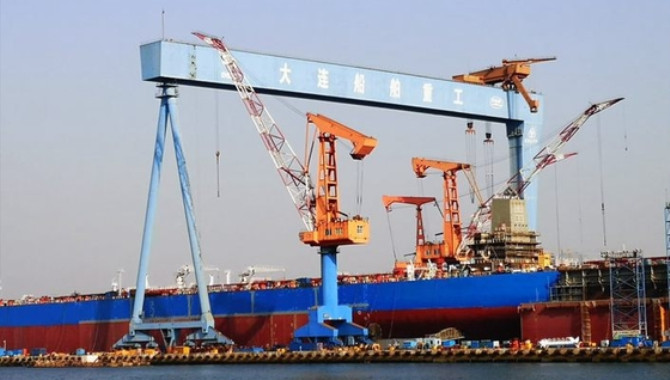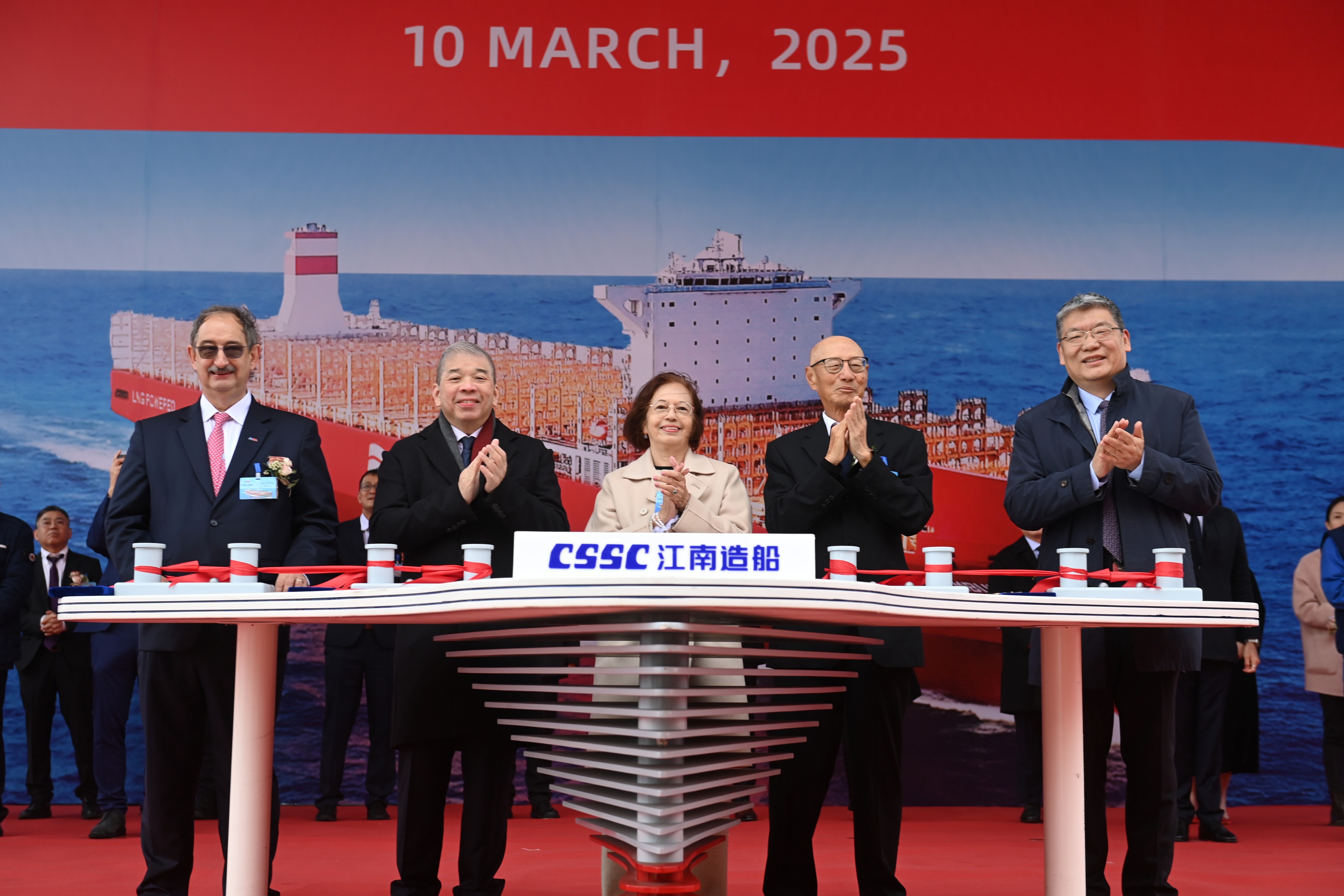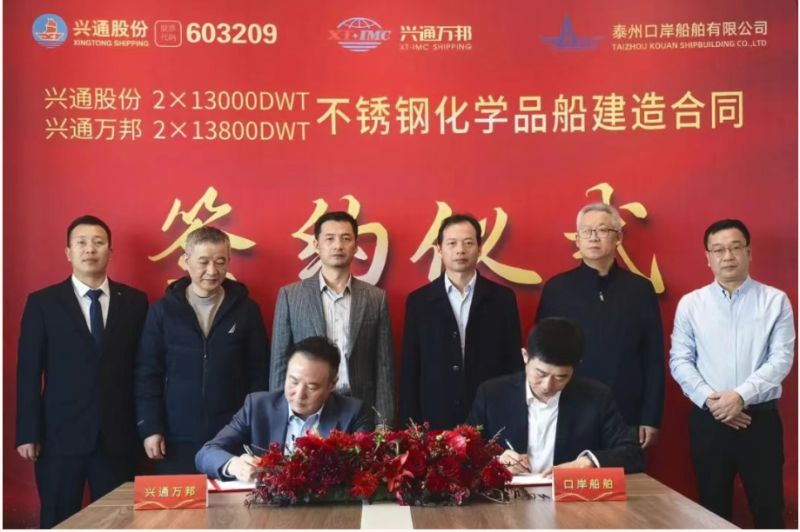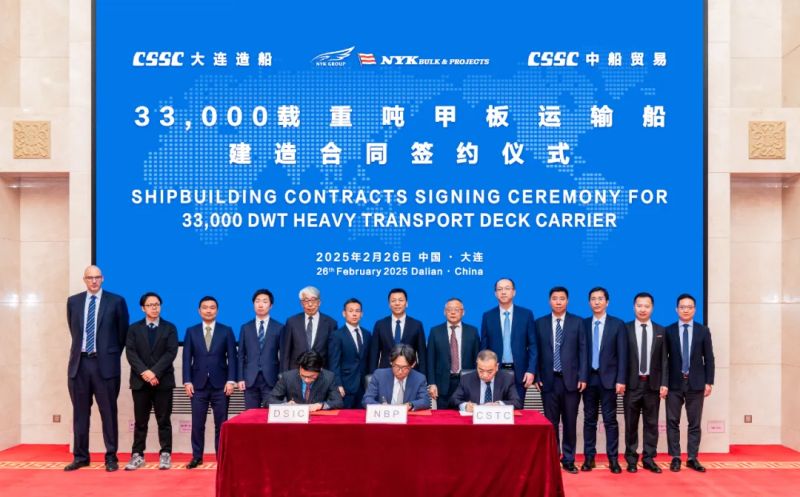
China's government-backed shipbuilders are busy despite the hammering the global shipping market has taken from the novel coronavirus pandemic.
By orders, China State Shipbuilding Corp., the country's top shipbuilder, was the global leader in the first quarter of this year, securing orders for 31 vessels. CSSC beat out Korea Shipbuilding & Offshore Engineering, a formidable South Korean rival whose units include Hyundai Heavy Industries. Hyundai Heavy was still the top shipbuilder on an annual basis in 2019.
CSSC's advance comes despite a slump in the global shipbuilding market brought on by the pandemic.The Chinese government is believed to have ordered state-owned shipping companies to place orders with CSSC and other domestic shipbuilders. CSSC and others also receive financial support from the government because of President Xi Jinping’s ambition to make China a maritime power.
Competition between Chinese and South Korean shipbuilders is likely to intensify.
According to Chinese media reports, CSSC received orders for 31 vessels between January and March worth a total of 9.4 billion yuan ($1.3 billion). The value of CSSC’s orders in the quarter reportedly rose year on year, although the previous year’s figures have not been made public.
Compatriot Yangzijiang Shipbuilding also received more orders. Chinese shipbuilders’ orders in the January to March quarter had a combined gross tonnage of about 4 million, roughly the same as a year earlier, according to British research specialist IHS Markit.
In stark contrast, the comparable figures for Japanese and South Korean shipbuilders plunged more than 50%. Korea Shipbuilding & Offshore Engineering received orders for 19 vessels in the January to March quarter, unchanged from a year earlier.
The value of shipbuilding-related orders received by the South Korean company rose 7% from the preceding quarter to $1.24 billion due to higher unit prices. But CSSC built more vessels, thanks to government support.
“CSSC is seeing a big increase in orders in China,” said one industry official.
Added to that, in April, CSSC received an order worth over 20 billion yuan for liquefied natural gas tankers from Qatar Petroleum, the Persian Gulf nation’s state-run oil company. The order was a record overseas deal for the Chinese shipbuilding industry.
Up to now Chinese shipbuilders have competed on price, with costs about 10% to 15% lower than their Japanese rivals. But industry officials say the Chinese are becoming more technologically sophisticated, helping them win business overseas.
The Chinese shipbuilding industry also benefits from strong government support. China has introduced a system under which leasing companies affiliated with state-owned banks purchase ships and then lease them to shipping companies and others. This makes the vessels government owned, in effect.
According to Greek market research company Petrofin Research, the total amount of ship-related loans extended by 40 major banks worldwide fell 13% at the end of 2018 versus the previous year, but amount of money for leasing in China rose 9% during the same period.
CSSC itself has been through many transformations. As the government introduced market reforms, the original CSSC was split into two companies — the former CSSC and China Shipbuilding Industry Corporation, or CSIC. The former CSSC and CSIC were China’s No. 1 and No. 2 shipbuilders.
CSIC, which ran shipyards in the north of the country, including at Dalian and Qingdao, was called “North Ship,” while CSSC, which operated in the south of the country, including Shanghai, was called “South Ship.” Last November, the two companies merged and launched the new CSSC, on the anniversary of the original CSSC breakup.
CSSC's sales totaled 380 billion yuan in the year ended December 2019. It has nine major listed group companies and employs about 310,000 people. In addition to building bulk carriers and passenger vessels, CSSC manufacturers related equipment, such as engines and systems to control ships.
Former CSIC Chairman Hu Wenming disclosed to Chinese media last August that the company had held talks with the former CSSC about a merger, starting around 2014. Behind the Chinese government’s long-awaited approval of the merger was “its intention to foster an export industry that can win globally, even during a recession,” said one industry source.
Under Xi's maritime power initiative, China is rushing to buy and invest in overseas ports.
CSSC,which also builds aircraft carriers and other military vessels, plays a key role in the initiative. The Chinese government hopes the merger of its predecessor company and CSIC will help CSSC sharpen its technology.
South Korea is responding with a push of its own. On June 1, Korea Shipbuilding & Offshore Engineering, Daewoo Shipbuilding & Marine Engineering and Samsung Heavy Industries signed a deal worth a total of about $19 billion with Qatar Petroleum to build more than 100 liquefied natural gas (LNG) tankers in what is said to be the biggest-ever order for such vessels.
LNG vessels must be strong and fuel efficient enough to sail with gas on board. Building such ships requires strong design skills. In terms of overall capability and track record, South Korean shipbuilders still have a big edge over CSSC.
But the global shipbuilding industry is mired in a prolonged slump. According to HIS Markit, orders tumbled 40% in the first quarter of this year from a year earlier. In this uncertain environment, CSSC also faces the challenge of streamlining its business following the merger. Many industry analysts believe CSSC will have to restructure its shipyards, closing some and consolidating others.
Source:Nikkei Asian Review
The opinions expressed herein are the author's and not necessarily those of The Xinde Marine News.
Please Contact Us at:
media@xindemarine.com


 World’s Largest Pulp Carrier Delivered 213 Days
World’s Largest Pulp Carrier Delivered 213 Days  Danelec Expands High-Frequency Data Installed-Base
Danelec Expands High-Frequency Data Installed-Base  World’s Largest LNG Dual-Fuel Container Ship Triu
World’s Largest LNG Dual-Fuel Container Ship Triu  PIL advances fleet renewal with the naming of its f
PIL advances fleet renewal with the naming of its f  Xing Tong Shipping Orders four 13,000 DWT stainless
Xing Tong Shipping Orders four 13,000 DWT stainless  Breaking New Ground in Maritime Excellence: DSIC &a
Breaking New Ground in Maritime Excellence: DSIC &a